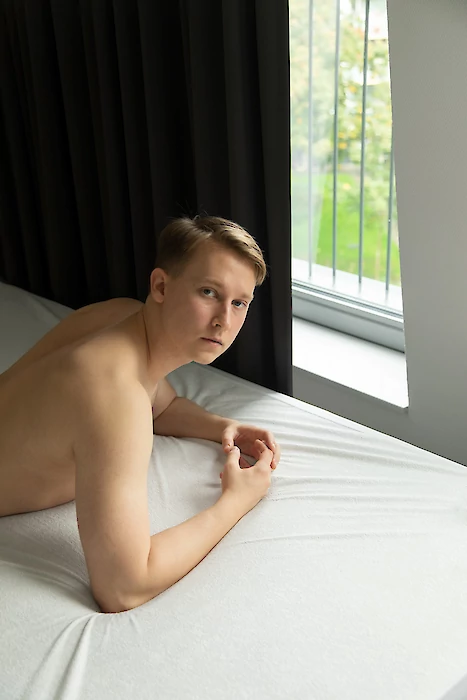Artor Jesus Inkerö Score, 2019
Searching for post-binary body language.
In their new performance titled, Score (2019), Artor Jesus Inkerö examines how language, gestures, and other ways of signaling and communicating between people may deny or allow access to specific groups, and how these physical patterns affect western culture as a whole. Having inserted themselves into unfamiliar situations with people who can be described interculturally as masculine performing, they have learned to mimic and question the affective power of physical appearance and behavior. Within their long-term performative research, Inkerö has started to interrogate their personal history and former appearance as their body has changed from non-passing to passing. In asking you to look closer at structures of power, Inkerö creates space for a fantasy of norm defiance.
Inkerö works in moving image, photography, sculpture, performance, text and installation. In their video works, Inkerö has placed their now dissonant figure in spaces where the character is often quietly observing the surroundings creating a dialogue between the space and the subject that evoke empathy with an adverse read of disconnect and detachment. Inkerö is exploring these ideas further by exhibiting a solo live performance in collaboration with the music producer Minna Koivisto and choreographer Ana Teo Ala-Ruona.
In this performance piece, Inkerö points out that the body language presented in this work, and within their practice at large, is often associated with negative connotations of generic western notions of masculinity. Inkerö aspires to shift the point of view to the violent structures behind these actions. For their work, they are attempting to create a physical language that acts in between specific common gestures and their personal modes of behavior.
Inkerö states that the inherent violence becomes visible in the performance through their individual way of moving. The gesturing of the performer becomes ambiguous and unharmonious when their attempt for masculinity fails. Inkerö is interested in this conflict that happens when a non-binary person is trying to achieve the most generic masculine version of themselves and ends up revealing possibly denied, hidden, and vulnerable feminine characteristics. This remark reflects a broader idea of the imperfections of human communication.
Text by Kristoffer Ala-Ketola









